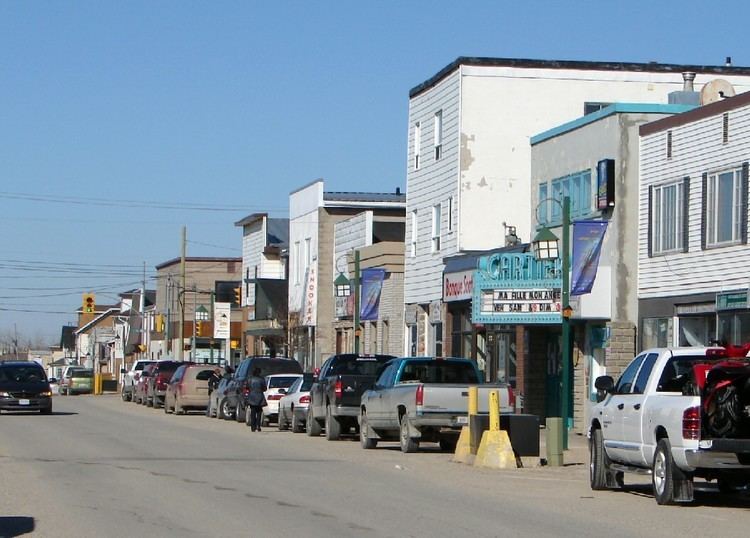Country Canada Established 1913 Postal code FSA P0L Population 5,090 (2011) | Time zone EST (UTC-5) Website www.hearst.ca Area code Area codes 705 and 249 | |
 | ||
Weather 5°C, Wind N at 8 km/h, 47% Humidity | ||
Hearst is a town in the Canadian province of Ontario. It is located in Northern Ontario in the District of Cochrane, approximately 92 kilometres (57 mi) west of Kapuskasing, approximately 935 kilometres (581 mi) north of Toronto and 520 kilometres (320 mi) east of Thunder Bay along Highway 11. At Hearst, Highway 583 extends northward to Lac-Sainte-Thérèse and southward to Jogues, Coppell and Mead.
Contents
- Map of Hearst ON Canada
- History
- Culture
- Industry
- Education
- Transportation
- Notable people
- Radio
- Television
- References
Map of Hearst, ON, Canada
History
The town came into being due to the construction of the National Transcontinental Railway in 1913. Established as a divisional point, Hearst is 208 km west of Cochrane and 201 km east of the divisional point of Grant. There is some historical ambiguity with the name Grant as the original site of Hearst was also called Grant and was changed to Hearst in 1911.
Hearst was named to honour William Howard Hearst, then Ontario Minister of Forests and Mines and later Premier of Ontario. It was incorporated in 1922. Many settlers to the town originally came from the province of Quebec. Many also came from Europe and other regions in Canada and the USA.
Culture
About 93.7% of Hearst's population is francophone. Different cultures can be found in Hearst such as Finn, Slovak, Bulgarian, Chinese, Portuguese, Greek, Ukrainian, First Nations and also Black Canadians.
The town is home to the Université de Hearst, a federated school of Laurentian University in Sudbury. The Hearst Public Library was founded on December 17, 1974. In its beginning, the library was situated in the basement of the Hearst High School where it shared its space with the school library. On June 4, 1984, the library moved to its present location, 801 George Street (formerly Stedman's).The primary industry of Hearst is forestry, with both mills and tree-planting organizations. Hearst is a four season destination. Many years ago, the town proclaimed itself the Moose Capital of Canada. Local outdoor activities include fishing, hunting, snowmobiling, cross-country skiing, camping, swimming, canoeing, and golf.
Industry
Hearst has a long tradition of being a "lumber town". Currently the major employers include a Tembec hard and soft wood facility as well as a plywood mill operated by Columbia Forest Products.
Education
Hearst has both elementary and high schools (public and Catholic). It also has the Université de Hearst, a post-secondary institution federated with Laurentian University in Sudbury. Education can also be sought at the collegiate level with the Collège Boréal.
Transportation
Hearst is served by Hearst (René Fontaine) Municipal Airport.
It is the northern terminus for a Canadian National Railways-operated passenger train service from Sault Ste. Marie, Ontario, running over the tracks of the former Algoma Central Railway. Hearst is also the northern terminus for Ontario Northland's coach service.
Notable people
Radio
Hearst's only local radio service is provided by CINN-FM, a community radio station. All other radio stations available in the community are rebroadcasters of stations from Kapuskasing, Timmins or Sudbury.
Television
Hearst was previously served by CBCC-TV and CBLFT-TV-5, rebroadcasters of the Toronto-based CBLT-DT (CBC Television) and CBLFT-DT (Ici Radio-Canada Télé) respectively, but the transmitters were shut down in 2012 due to budget cuts at the Canadian Broadcasting Corporation.
